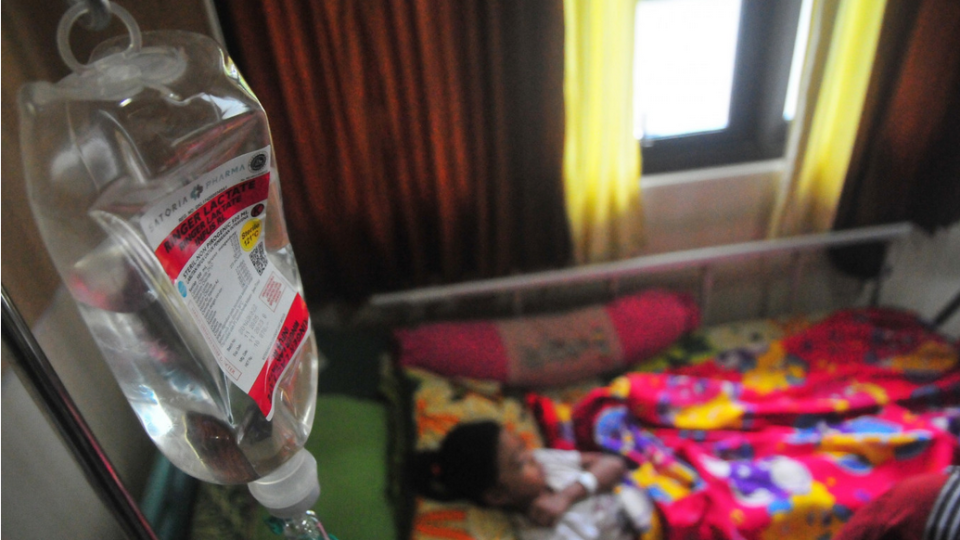April 24, 2024
JAKARTA – Indonesia has seen almost three times as many deaths from dengue fever so far this year compared to the same period last year, as warmer weather triggered by the El Niño climate phenomenon drives up cases across the country.
The Health Ministry has discovered roughly 62,000 dengue cases with 475 deaths from January to mid-April, almost triple the 22,500 cases and 170 deaths during the same period last year.
In January this year alone, Indonesia saw 25,218 cases of dengue, the highest monthly rate in five years. Dengue-related deaths reached 191 in February, the highest number of monthly fatalities since January 2022.
The ministry has blamed the recent outbreak on a warmer rainy season caused by the El Niño climate phenomenon, which speeds up mosquitoes’ life cycles, helping them grow faster and live longer.
Warmer temperatures also speed up virus reproduction in infected mosquitoes and increase the frequency of mosquito bites, allowing them to spread diseases more quickly.
The recent spike of cases has overwhelmed hospitals in several cities, forcing medical workers to treat patients in the hallway and to turn away sick people.
Dengue fever is a viral disease transmitted through the bite of infected Aedes aegypti and Aedes albopictus mosquitoes, which are commonly found in places with tropical climates such as Indonesia.
Non-distinctive symptoms
Masdalina Pane of the Indonesian Epidemiologists Association (PAEI) has advised the government to closely monitor the genomic sequence of the dengue virus to see whether there is a new variant of the disease spreading among the public.
She cited a recent statement from Anhar Hadian, the head of the Bandung Health Agency in West Java, who said that the majority of recent dengue patients in Bandung did not exhibit the typical dengue symptom of a red skin rash.
Dengue fever usually causes a severe flu-like illness, such as sudden high fever, severe headaches, joint and muscle pain, nausea, vomiting and distinctive tiny rashes across the patient’s body.
“The absence of the most distinctive markers of dengue fever means that a lot of people who are infected with the disease will think that they only suffer from a cold and may only go to the hospitals when it’s too late,” Masdalina said recently.
“So it’s important to find the reason behind this phenomenon and whether there’s a new or a more virulent variant of the virus spreading among the public. It’s also very crucial to communicate this to the public so they become more alert if they experience any flu-like symptoms,” she added.
Health Ministry spokesperson Siti Nadia Tarmizi, however, dismissed the concerns, saying that not all dengue patients would show typical dengue rashes.
“A lot of patients also did not notice their rashes because they only had a few rashes and they were located in hard-to-see areas,” Nadia said on Friday.
She further stated that the ministry had been regularly tracking the genomic sequence of the dengue virus, and the most common serotypes found at the moment were Dengue virus serotype-2 (DEN-2) and Dengue virus serotype-4 (DEN-4).
Dengue infections are caused by four closely related viruses named DEN-1, DEN-2, DEN-3 and DEN-4. Scientists have described DEN-2 and DEN-3 as the most virulent types and are commonly associated with more severe disease outcomes.
Ongoing efforts
Nadia said public adherence to the decades-old “3M” campaign was crucial to curb the spread of dengue and subsequently curb fatalities related to the disease.
The “3M” stands for menguras, menutup, mendaur ulang (draining water sources, covering water sources and recycling) to get rid of items that could potentially serve as breeding grounds for mosquitos.
Nadia also added that the ministry would continue spreading lab-bred mosquito eggs containing Wolbachia bacteria into the wild to reduce the spread of dengue fever.
When mosquitoes are injected with Wolbachia, the bacteria competes with viruses like dengue, making it harder for the viruses to reproduce inside mosquitoes and hence reducing the insects’ ability to transmit dengue to humans.
The Wolbachia project has been implemented in five cities so far, but continues to face pushback from the public out of fear that the lab-bred mosquitos will harm their health as well as the environment.
Imran Pambudi, the Health Ministry’s director for communicable disease control and prevention, previously stated that public resistance to new technology to fight dengue and a lack of adherence to the 3M campaign posed significant challenges to dengue prevention efforts in the country.


